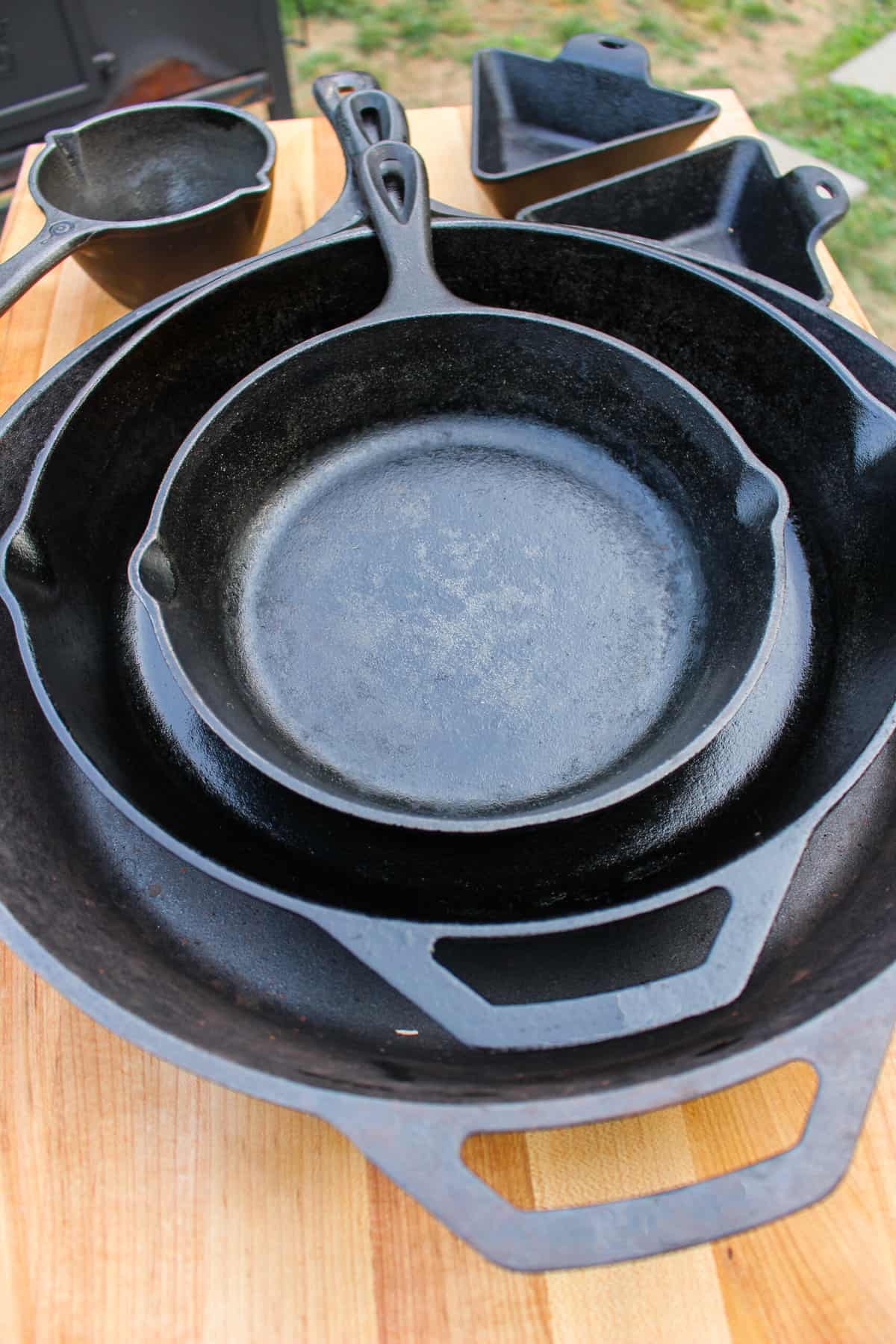
If you’ve ever wondered how to Clean Your Cast Iron Skillet, just know you’re not alone.
Anyone that loves to cook knows that the cast iron skillet is the chef’s primary weapon in the kitchen. One of the most important parts of owning these sleek, heat-retaining, indestructible, incredible pieces of equipment with a nonstick surface is knowing just how to maintain it from the first use onward. So, I’m going to show you just how to clean cast iron skillets!
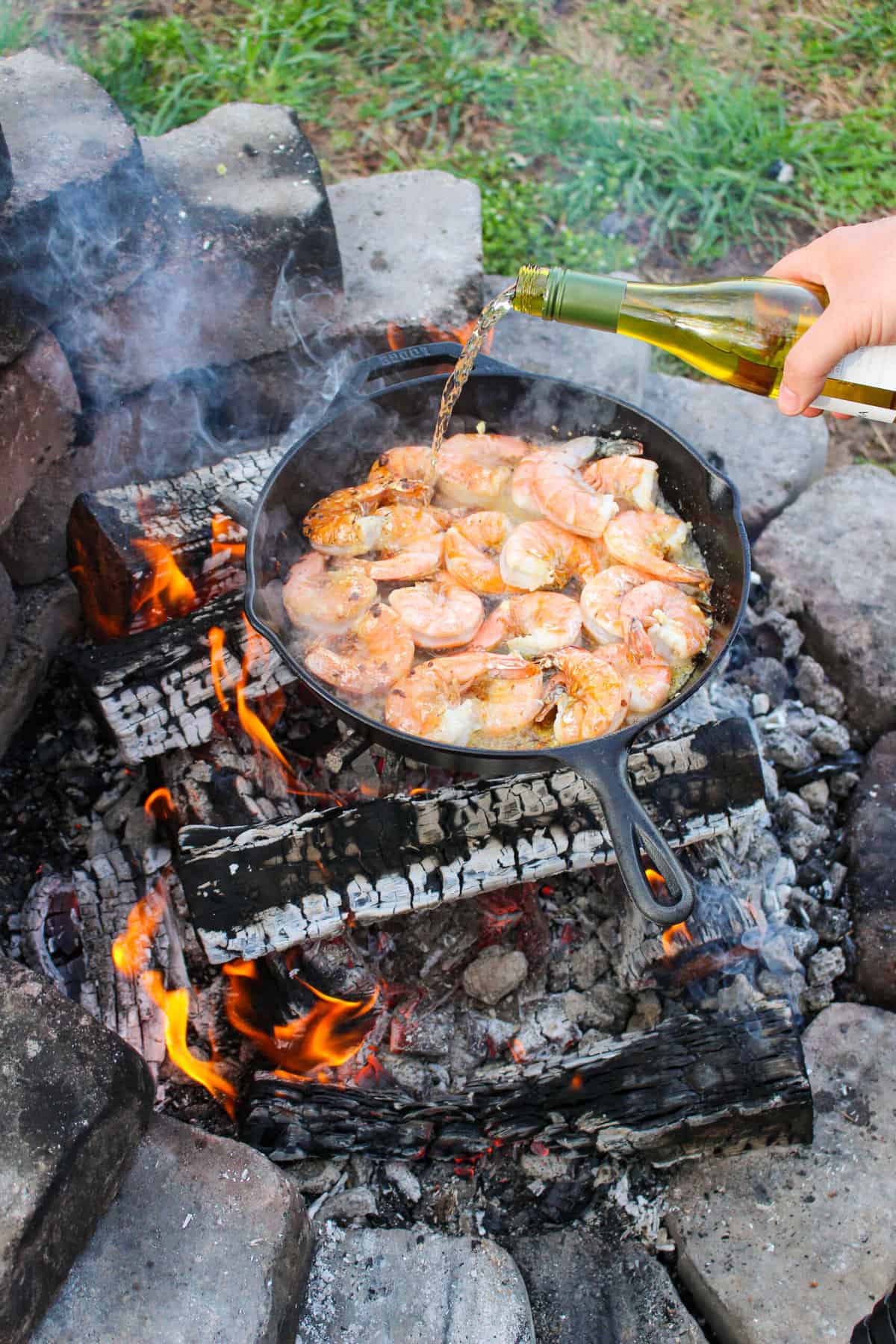
Whether you’re sautéing vegetables, searing or braising meat, roasting in the oven, or even cooking on the grill, the cast-iron skillet is there by your side every step of the way—and it will remain that way with proper maintenance!
Don’t worry! This process is super simple!
The Basics on How to Clean Your Cast Iron Skillet
There are a couple things you need to know when it comes to your everyday usage of cast iron. First, let’s talk about mild dish soap.
On occasion, I will use a little bit of soap to clean my cast iron… *gasp*… Hear me out though.
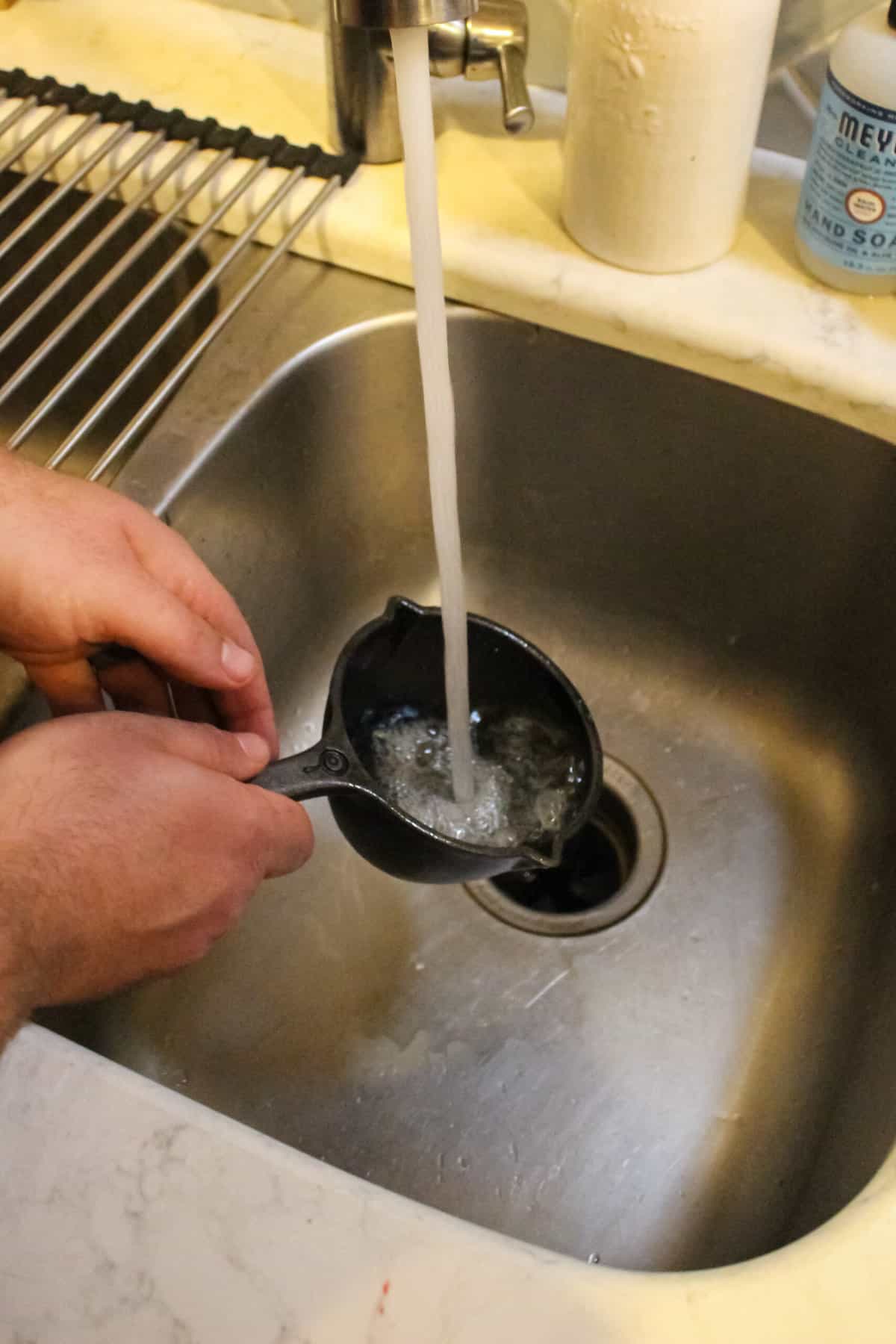
I cook a lot. It’s honestly more common for me to cook dinner over an open flame than it is to cook any other way, and because of this I lean on my cast iron skillets a lot.
After I’ve finished cooking, if I can clean the pan without a little bit of dish soap, I will. To clean the cast iron skillet, rinse it first under hot water to remove any excess food or residue. Then, use a wet, clean paper towel to wipe out the inside of the pan until it’s fully clean. Easy enough!
Cleaning Your Cast Iron Skillet – The Big But
But… What if it’s not easy? The fire was ripping. You like roasted, slightly charred veggies… Or crispy skin on your salmon filet… and there are bits of food residue that just won’t come off with water alone. If I feel confident the seasoning will hold, I will attempt using a little soap.
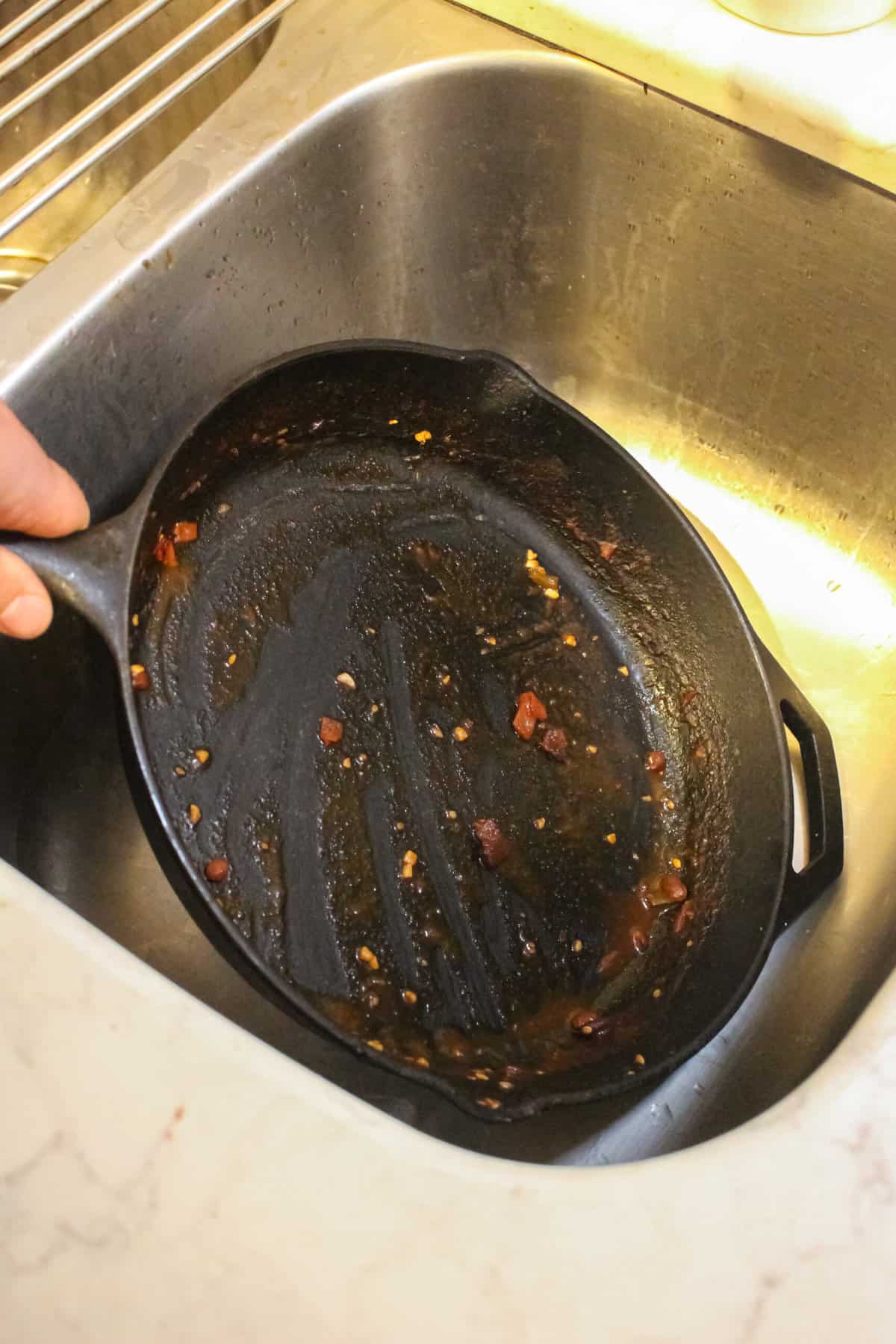
I don’t know about you, but I would rather use a small bit of soap to help scrub that grime away than allow crusty, unwanted salmon residue onto my next meal. If you are 100% against soap, I’m not going to fight you on it. However, in my experience a small bit of soap provides significant help to clean your cast-iron pan without doing much harm.
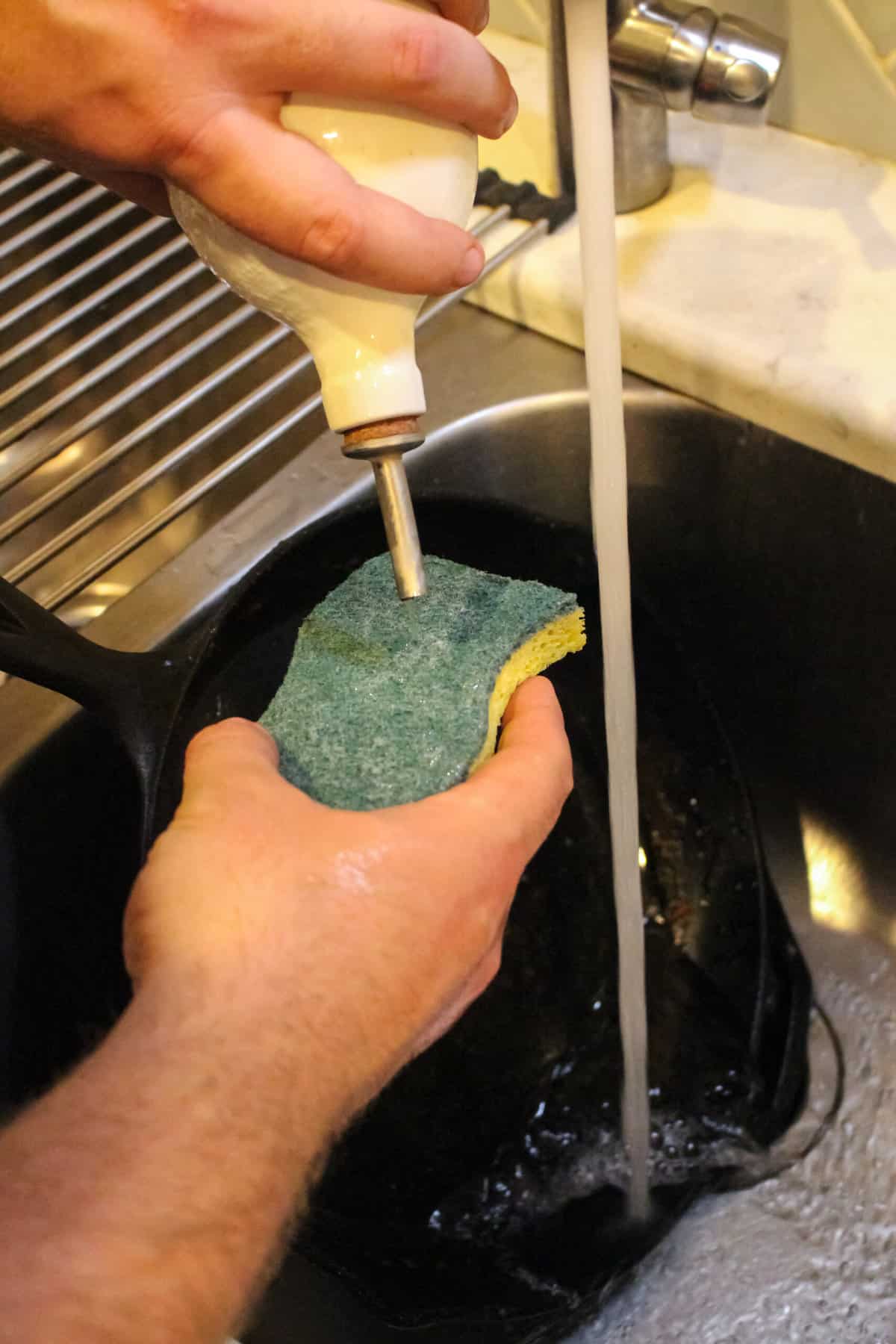
With that said, the cleaning process is basically the same. Start with warm water and clean out the past as much as you can with just water. Then, add a drop of soap (as little or as much as you feel is needed to get the job done), and scrub those stubborn areas. Then, rinse again with warm water and use a towel to thoroughly dry the skillet.
The Most Important Step
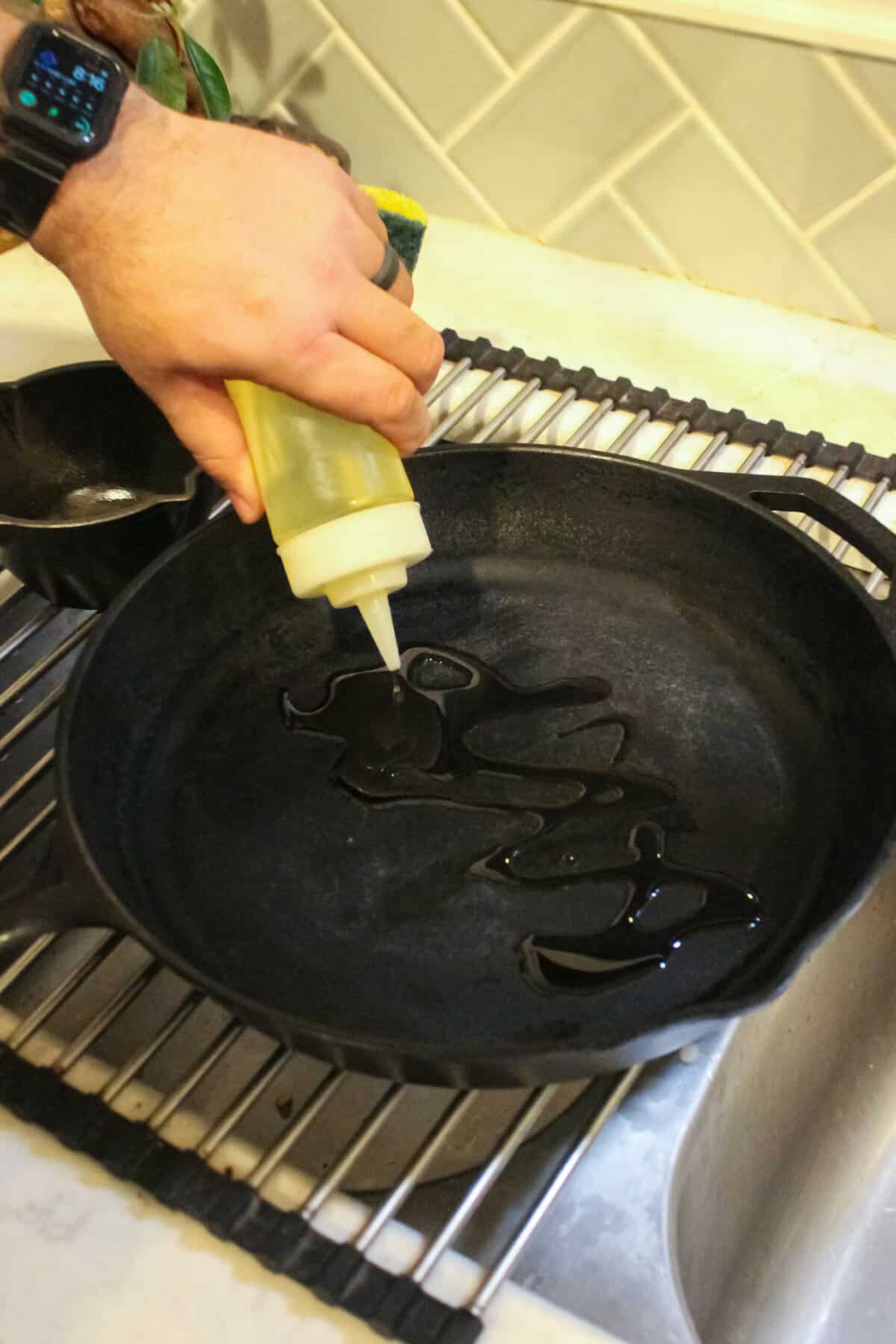
Regardless of whether you use soap or not, the most important step of cleaning cast iron cookware is wiping a thin coat of oil on the skillet before storing. I like to drop some oil (usually grapeseed oil) into the skillet and use a paper towel to wipe it all across the cooking surface and absorb any excess oil. That’s it!

Of course, you could use a different type of oil, like vegetable oil, flaxseed oil, olive oil, or soybean oil– it all comes down to your preferences.
Now, store your cast iron skillet in a cool, dry space until you need it for your next cooking adventure.
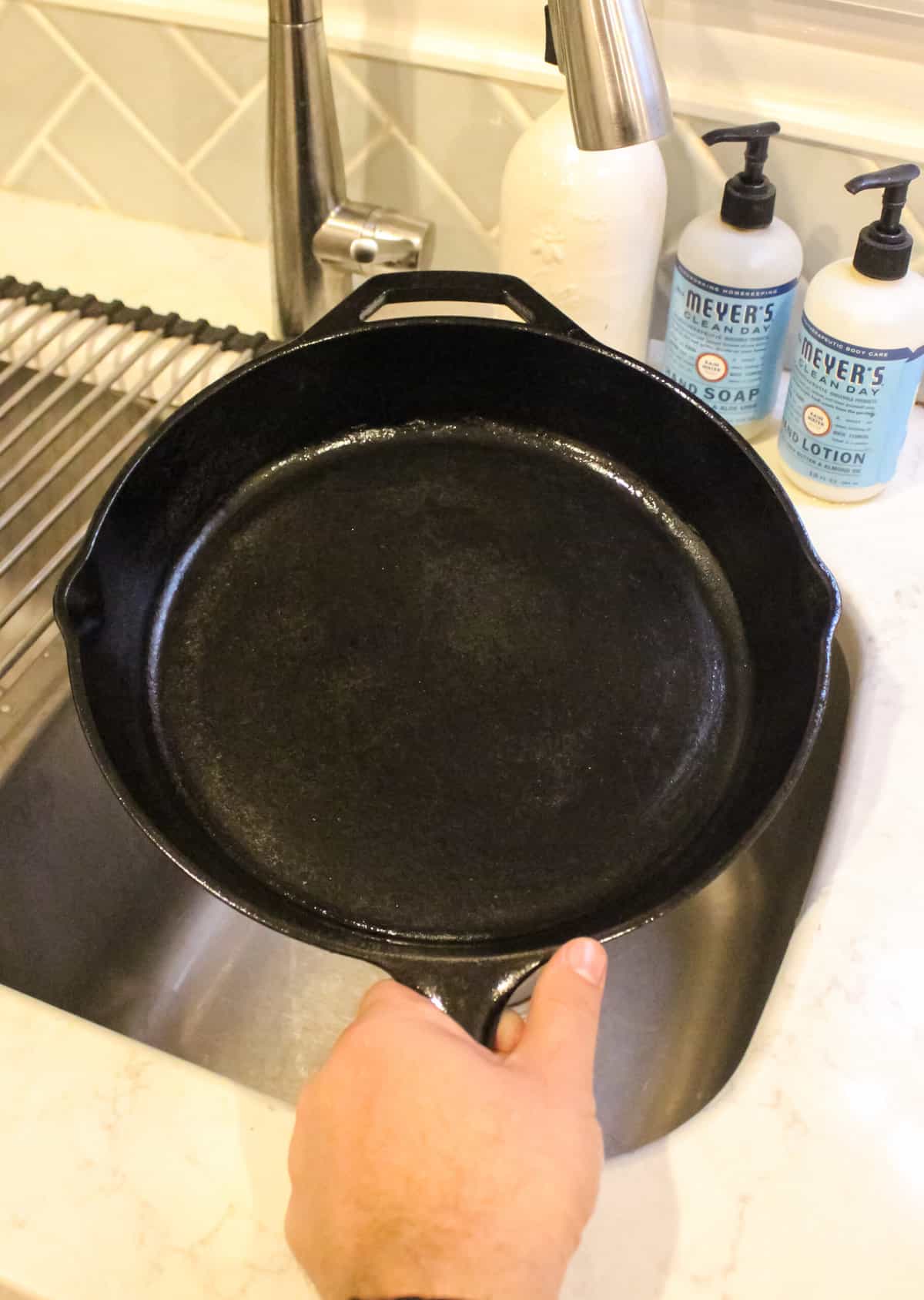
For some cast iron skillet recipes, check out my Skillet Choriqueso, Leftover Brisket Breakfast Skilletand Backyard Skillet Beer Brats.
Food That’s Still Stuck
Okay, so sometimes the food really gets stuck to the inside of the pan and you need more than soap alone to clean it. If that happens, don’t worry. There’s a couple easy ways to clean it without scratching up the whole surface of the skillet.
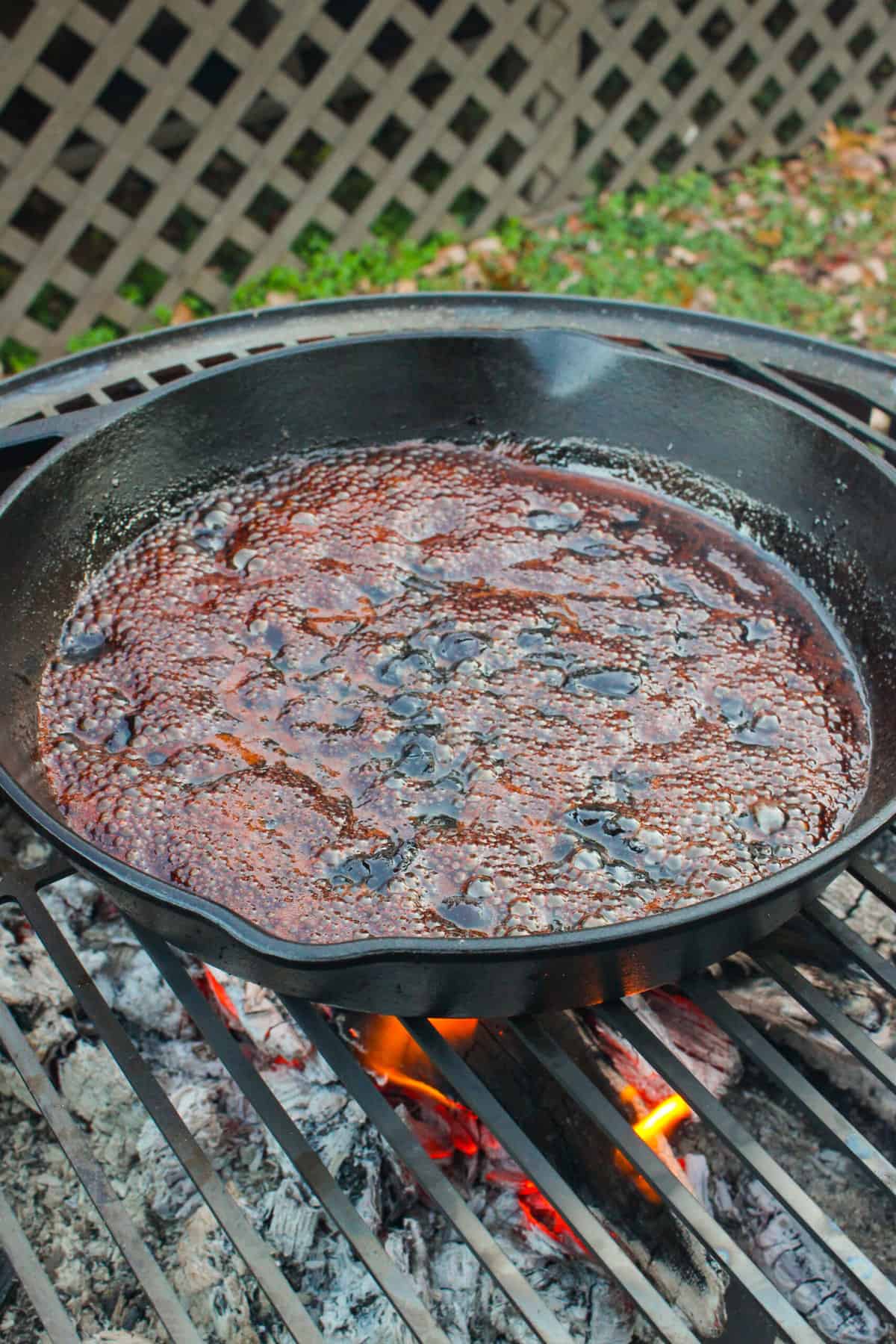
Option One: Deglaze your cast-iron cookware with red wine. It’s as simple as it sounds. Get some red wine (an inexpensive bottle, save the good stuff for drinking) and pour a thin layer of it into the skillet until the stubborn, stuck food is covered.
Then, place the skillet on the stove and bring the wine to a light boil. Allow it to boil for a couple of minutes to soften the stuck food pieces, then use a pan scraper to gently remove the pieces of food.
Please note: the acidity of the wine will help remove remnants of food, but can also harm the cast iron if it’s left to boil for an extended period of time. Don’t leave it to boil for longer than 5-6 minutes. If the food won’t come off after that point, we’ll utilize option two.

Option Two: Get salty. One of my favorite tricks is to scrub those pesky bits of food away with salt. For this process, you’ll actually dry off the cast iron. Then dump half a cup of coarse salt into the pan. Now, use a dish towel or some paper towels to scrub that food away!
Tell Me More About This Salty Option
I like this option because the grit of the salt helps remove the food without causing damage to the skillet itself, like abrasive cleaners do. Salt can also help remove light rusting from the pan as well. You’ll have to put a little elbow grease into it, but it’ll work.
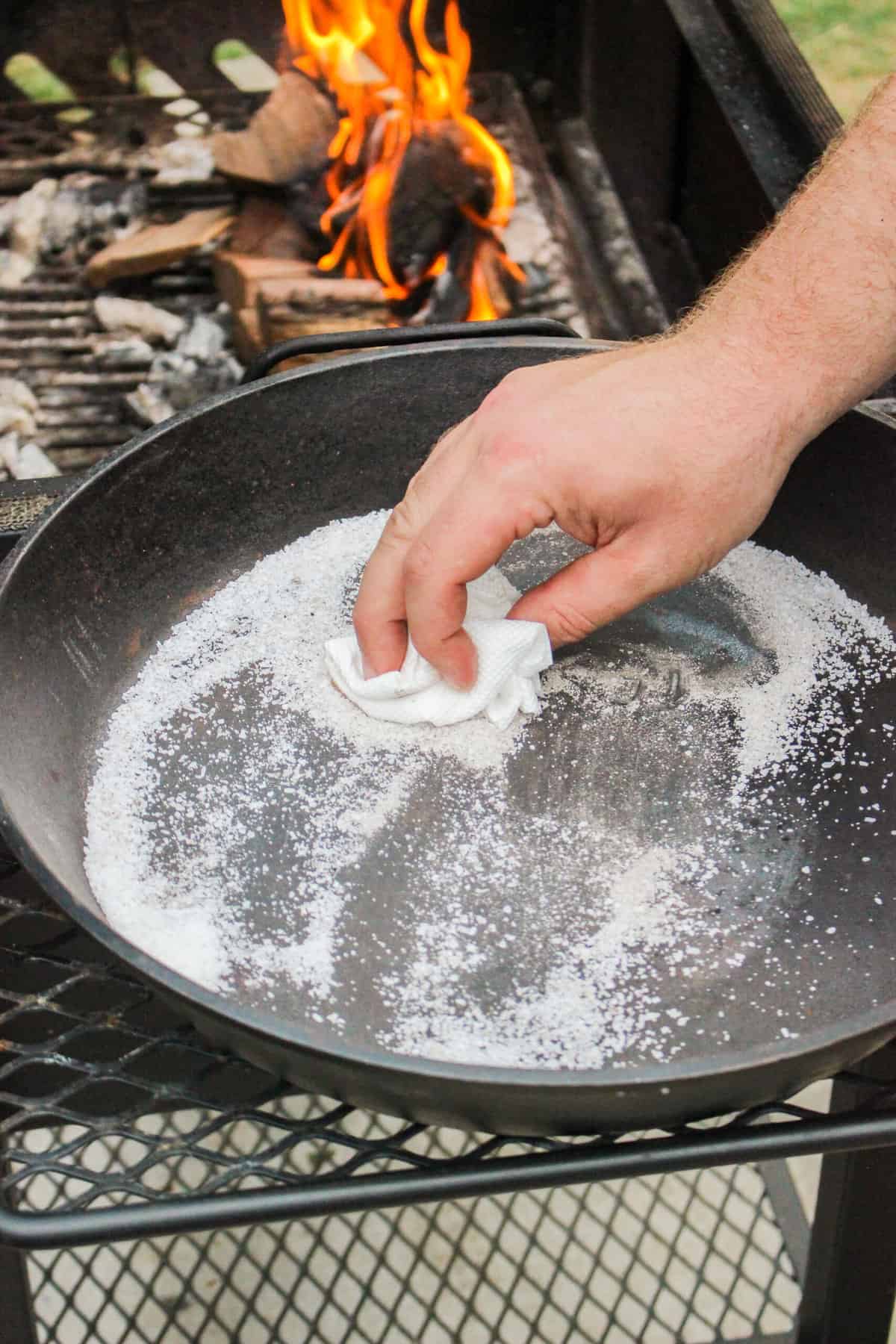
If there’s lots of residue that needs to be removed (crusty food or light rust), you may have to “rinse and repeat” this salt process. Meaning, dump out the first batch of salt after it becomes discolored and fine, and replace it with some fresh, coarse salt.
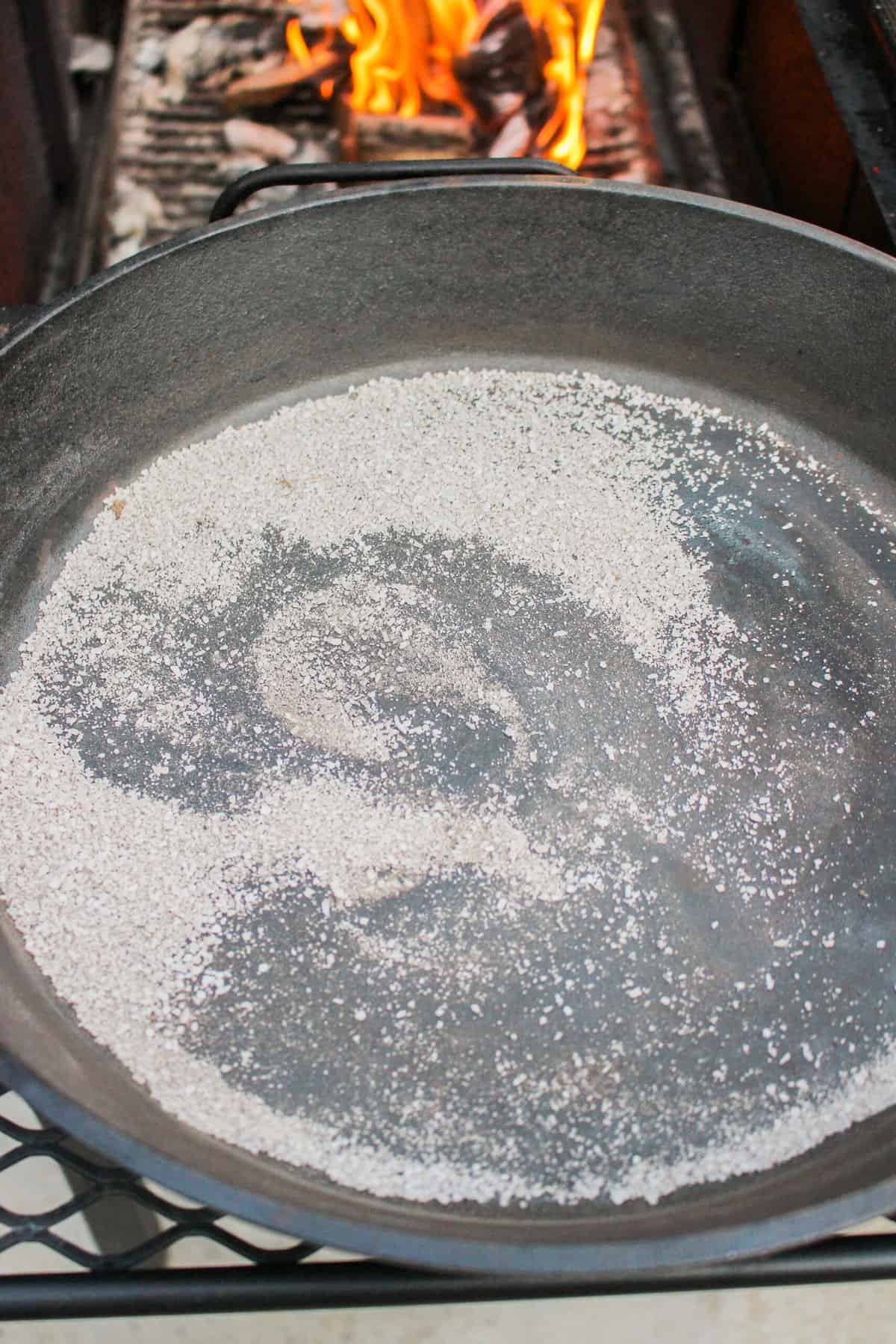
After all the food residue and/or light rust spots are removed, clean with water and coat with oil as instructed above! Depending on how much scrubbing you had to do, you may want to consider re-seasoning the pan with seasoning spray.
For more information on the seasoning process of a cast iron skillet, check out my article How to Season Your Cast Iron Skillet.
How to Clean Your Cast Iron Skillet if it Heavily Rusts
My cast iron skillets don’t tend to rust because they don’t really have time to. We do a lot of cooking over here, if it wasn’t already obvious. However, rusty cast iron pans do exist, especially if they don’t get regular use. If you’re an owner of a rusty old skillet, let’s discuss how you can save it! Here’s how:
First, use a wire brush, metal scouring pads, or steel wool to scrub all of the rust off the surface of the pan. In this case, it is okay to use soap because you’ll re-season the pan once it’s clean.
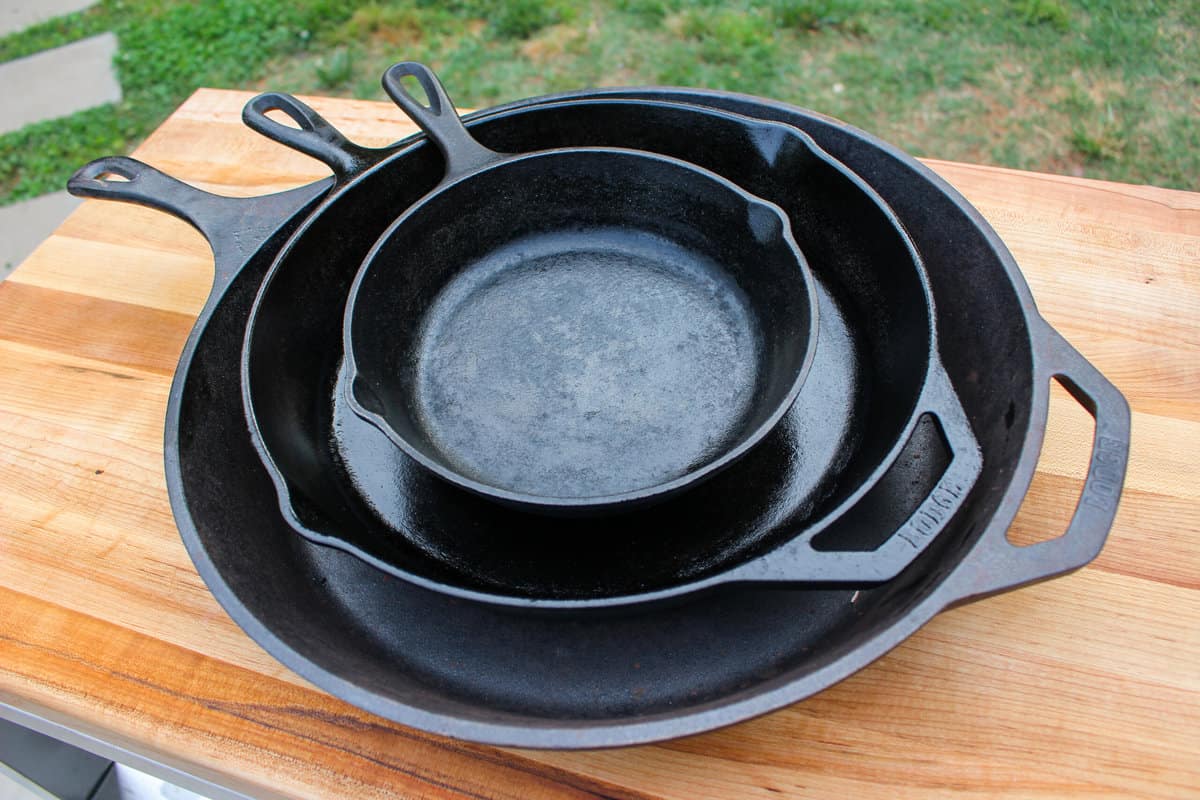
Next, clean it as instructed above. And last, re-season the pan so it’s good as new!
Wondering how to Season or Re-Season a cast iron skillet? Well then, you should read my article: How to Season or Re-Season Your Cast Iron Skillet!
For more delicious recipes, check out my second cookbook Flavor X Fire or my first cookbook Food X Fire!
Needing more spice in your life? My spice line can help with that. Check them out here.
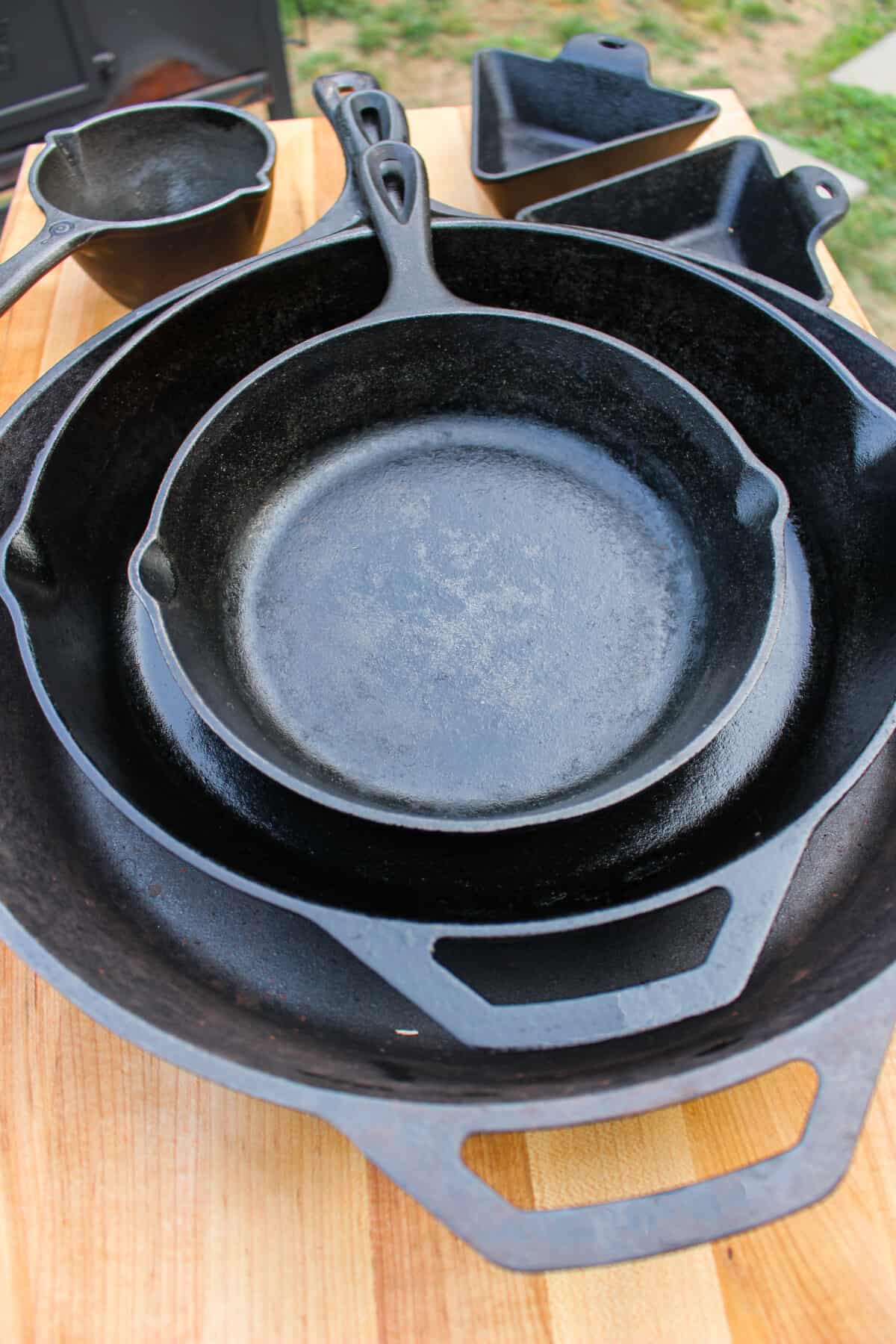
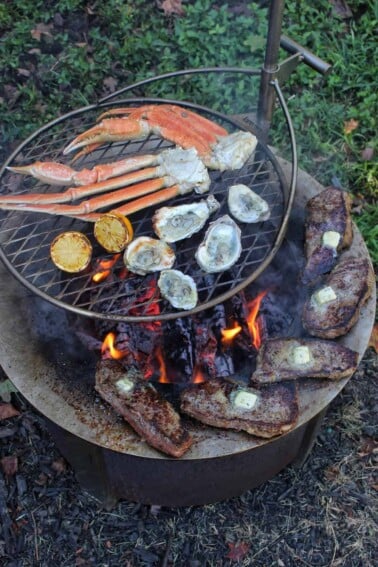
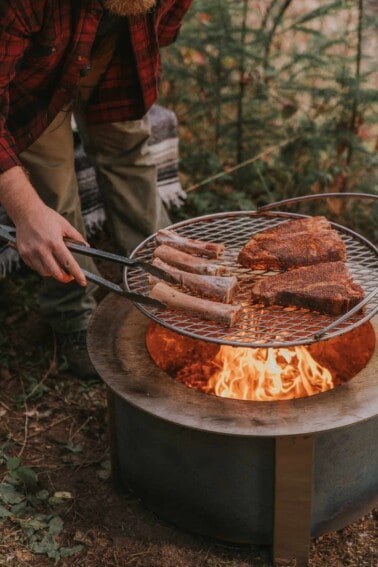
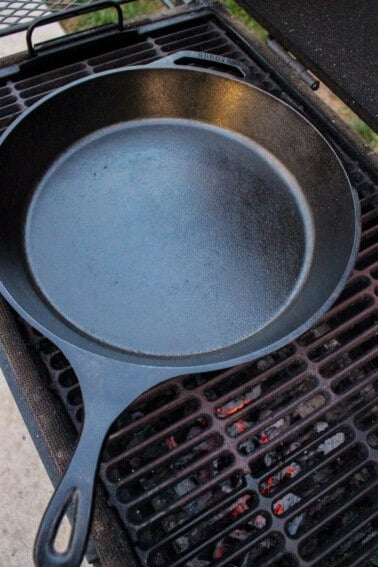
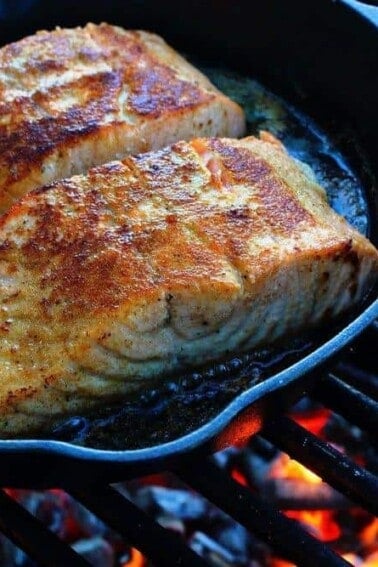









I completely agree, if it’s a decent cast iron and has been well seasoned several times, the soap will not damage the seasoning.n I also use grape seed oil, there have been a couple junkyard finds I’ve taken down to bare metal until mirror like finish and then seasoned with grape seed oil, it gives a beautiful almost gun metal finish.
Hi! I have a question. I am doing the carnivore diet and staying away from oils. So I seasoned my cast iron skillet with Wagyu beef tallow. My question is, after cooking on my skillet and cleaning, can I just coat it with a little beef tallow instead of an oil? Or will the beef fat start to go rancid after awhile?
After a while, then fat will likely go rancid. That being said if you do decide to use beef tallow, then make sure to use it daily. That will likely keep it fresh and prevent it from truly becoming rancid.
Ok, thank you!
Good job, Derek. I have been using cast iron for many years and your advice is spot on.
My dad recently passed away and 3 of his most prized possessions were his 3 cast iron skillets. Noone was to ever, ever, ever, ever (did I mention ever) cook with or clean his skillets except him. That was until his last year of life when he couldnt cook anymore. He finally entrusted to me, and only me, the privilege of caring for the layers upon layers of years of seasoning and hard work. I feel like I’m failing him now, though, because they don’t look as pristine as they did when he was alive. I remember my dad setting the skillets on the heated stove top to dry after cleaning them and before storing them in the cabinet. Is this something that you do as well? Also, is there an oil that is not good for seasoning the skillets? Which ones are the best?
Hi Sarah. I am sorry for your loss. That cast iron is a very special thing to hang on to and take care of! If you haven’t already, check out my article about Seasoning or Re-Seasoning a Cast Iron Skillet, found here: https://overthefirecooking.com/season-or-re-season-a-cast-iron-skillet. I like to use avocado or canola oil (whichever I have on hand at the time). After using and cleaning your cast iron, it’s important to make sure it’s thoroughly dry and then wiping a layer of oil over it again as needed.
Very helpful, thank you!
Hello Derek,
Great advices, I am new to cast iron, and I have a question.
I live in the RV and cook on open flame everyday, 2 small pans and skillet plate (one side flat, other griddle). I am planing on to season the plate, I cook more on griddle side, do I “bake” both sides or just the side I use the most. Also I have limited excess to water, is burning off the remaining food after cooking is good idea?
Thank you!
I would just bake the inside as thats the only part that really matters. Burning off food is not a bad option either. You can heat it up and deglaze with beef stock or alcohol too to get the burnt bits to unstick.